UsbHub3.sys Blue Screen Error: Causes & How to Fix
UsbHub3.sys is a default driver file for the USB Hub device
4 min. read
Updated on
Read our disclosure page to find out how can you help Windows Report sustain the editorial team. Read more
Key notes
- The UsbHub3.sys error will appear as a Blue Screen of Death and prevent access to other PC functions.
- Often, this error is prompted when corrupt system files or drivers are outdated.
- You may try updating device drivers and running a disk utility scan as alternatives to troubleshooting.
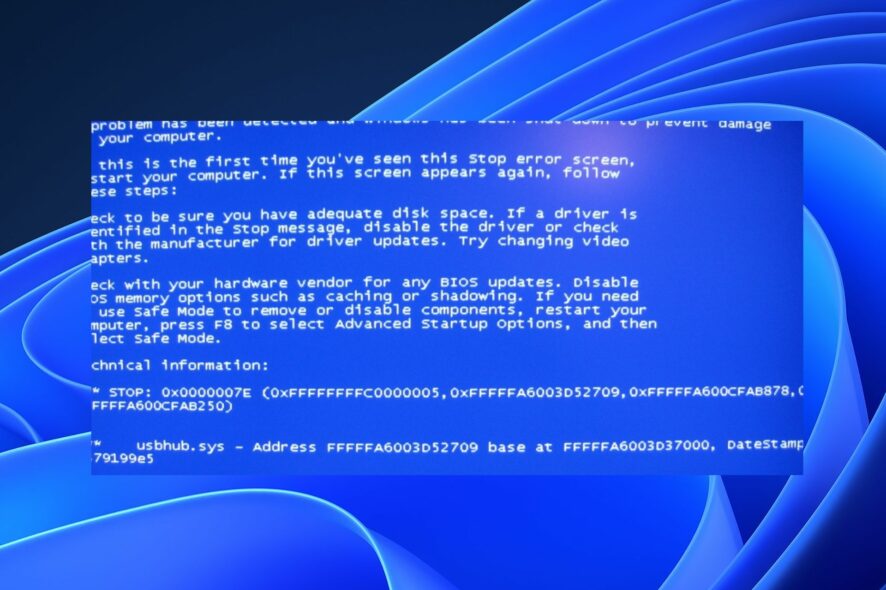
UsbHub3.sys is a Windows driver file but can sometimes cause issues that may lead to Blue Screen errors on the PC. This may be due to numerous problems affecting the file, resulting in the UsbHub3.sys error. Fortunately, this guide will discuss the causes and possible fixes for the error.
Further, you can check the major causes of BSOD and everything you need to know about fixing it.
What causes the UsbHub3.sys error?
Here are some notable factors that can cause the UsbHub3.sys error BSoD to appear on your computer:
- Corrupt system files – If the system files are corrupted, they can infect other files running the device drivers, resulting in corrupt or virus-contaminated UsbHub3.sys.
- Conflict with Antivirus programs – Antivirus software may interfere with the activities of the driver files on your PC or pick them as threats to the system.
- Outdated or conflicting device drivers – When you install a driver not compatible with your system, it can affect other drivers running on your PC.
- Hardware issues – The error can occur after installing new hardware or software, such as a Windows update on your computer.
Nevertheless, you can fix the UsbHub3.sys error by following the steps below.
How can I fix the UsbHub3.sys error?
Before proceeding with any advanced troubleshooting steps, go through the following:
- Turn off background apps running on your PC.
- Temporarily disable Antivirus software.
- Restart Windows in Safe Mode and check if the UsbHub3.sys error appears.
If you can’t resolve the error, try the steps below:
1. Run SFC and DISM scans
- Left-click the Start button, type Command Prompt, and click the Run as administrator option.
- Click Yes on the User Account Control (UAC) prompt.
- Type the following and press Enter:
sfc /scannow - Type the following commands and press Enter:
DISM /Online /Cleanup-Image /RestoreHealth - Restart your PC and check if the error persists.
Running an SFC scan will detect and repair corrupt system files. The DISM scan will restore disk health. Check how to fix the run as administrator option if it’s not working on your PC.
2. Run the Check Disk Utility
- Left-click the Start button, type Command Prompt, and click the Run as administrator option.
- Click Yes on the User Account Control (UAC) prompt.
- Type the following command and press Enter:
chkdsk C:/r/x - Exit the Command Prompt and restart the PC.
The CHKDSK command allows the system to scan the disk, read partitions, and troubleshoot issues affecting the UsbHub3.sys disk utility driver.
See what to do if you experience chkdsk.exe running on every boot issue on Windows 11.
3. Update driver using Windows update
- Press the Windows + I key to open the Windows Settings app.
- Go to the Windows Update tab and select the Advanced options.
- Click on the Optional Update.
- Tap on the drop-down button on the Driver Update and checkmark the list of updates available.
- Click the Update and Install button and wait for the drivers to install.
Installing driver updates will fix bugs affecting your devices and improve the performance of the Windows components. Read about ways to diagnose and fix Windows Update not loading on your PC.
4. Run System Restore
- Press Windows + R key to open the Run dialog box, type control, then press Enter to open the Control Panel.
- Type recovery in the Control Panel search bar and select Recovery.
- Then click Open System Restore.
- Click Next in the Restore system files and settings window.
- Choose the restore point you want to restore from and click Next.
System Restore will remove recent activities after the restore point, recovering the system to the previous point with its files intact. Read our guide on how to fix Restore Point if it’s not working on your PC.
5. Update Windows OS
- Press Windows + I key to open the Windows Settings app.
- Click on Windows Update and select the Check for updates button. If there are any updates available, it will search for and install them.
Updating Windows will fix system bugs impeding the driver’s processes and install new features to help the system run correctly.
Check our guide about fixing Windows not connecting to update service on your PC.
In addition, our readers can check the Wdcsam64.sys Memory Integrity Error and how to fix it on Windows 11. Also, read about the Brusbsib.sys Incompatible Driver error on Windows PCs.
If you have further questions or suggestions, kindly drop them in the comments section.
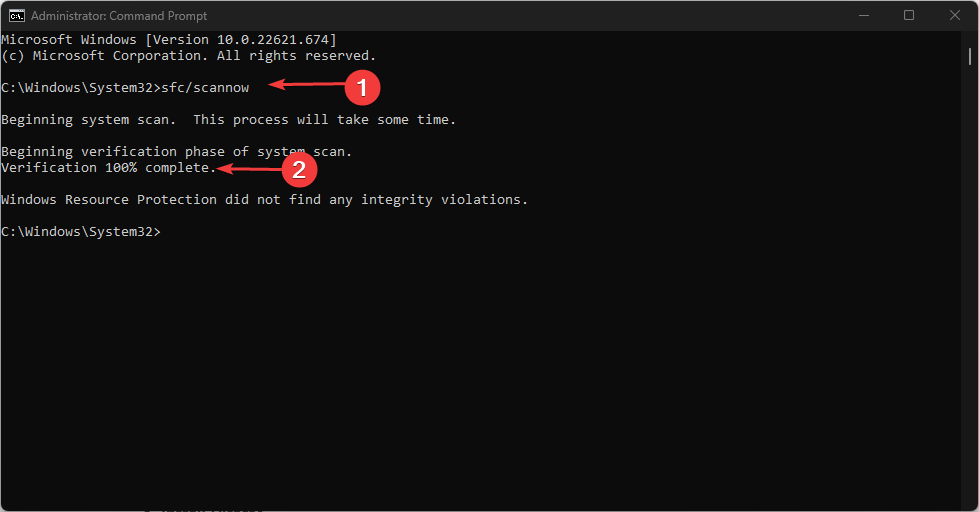
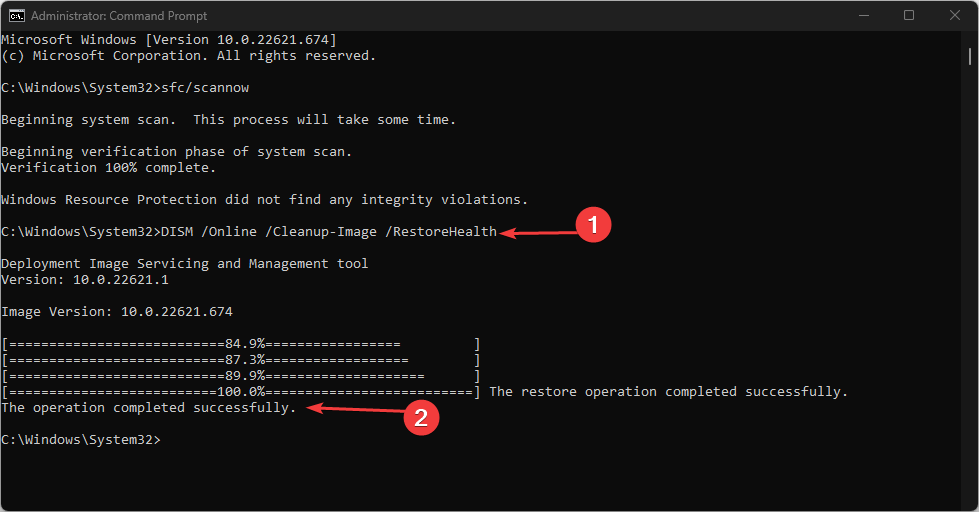

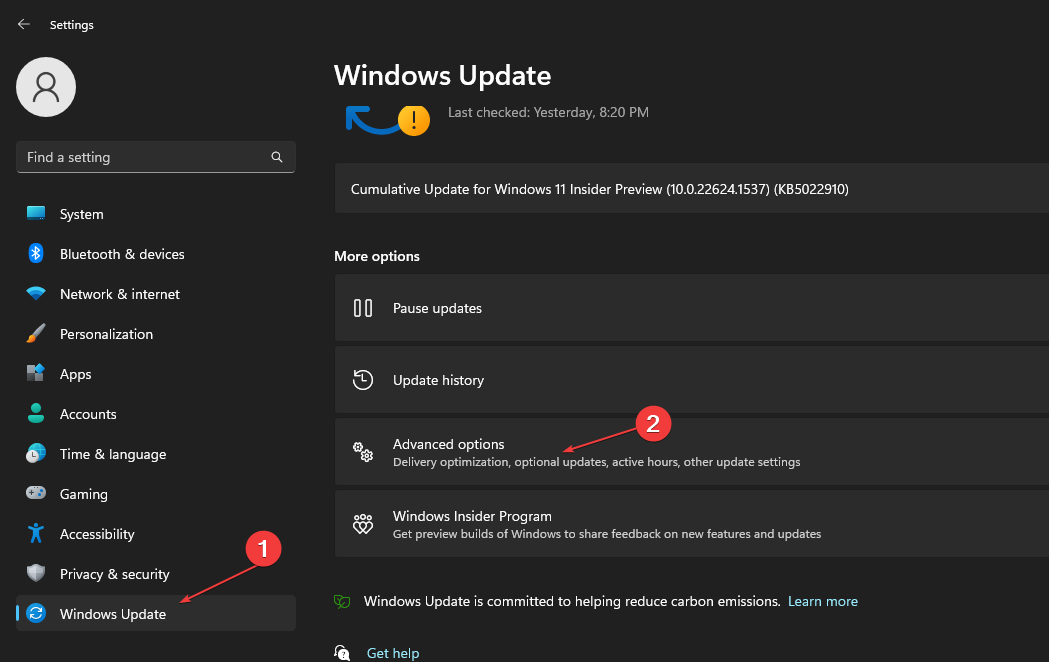
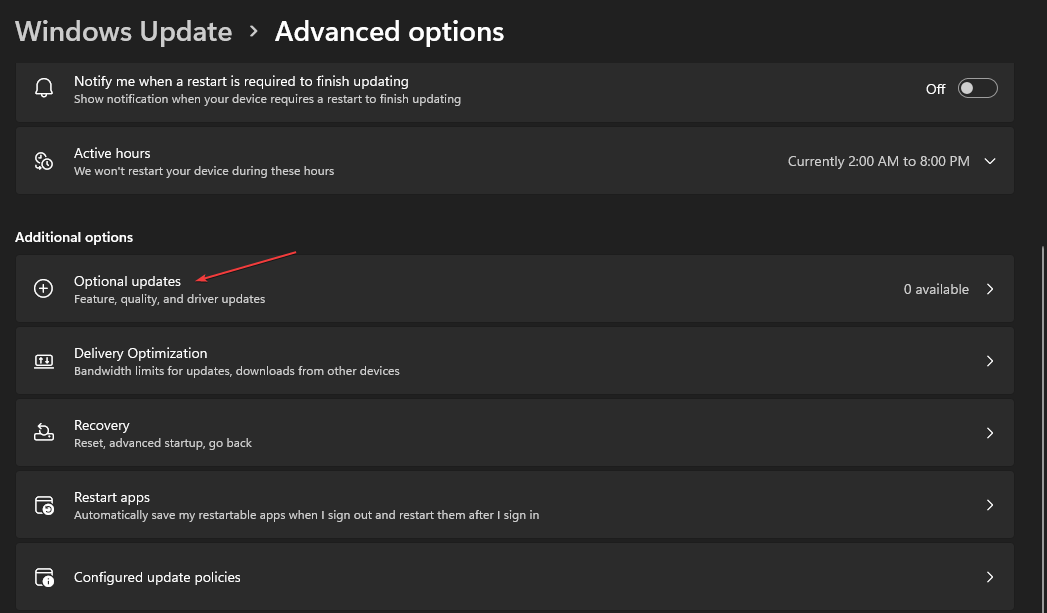
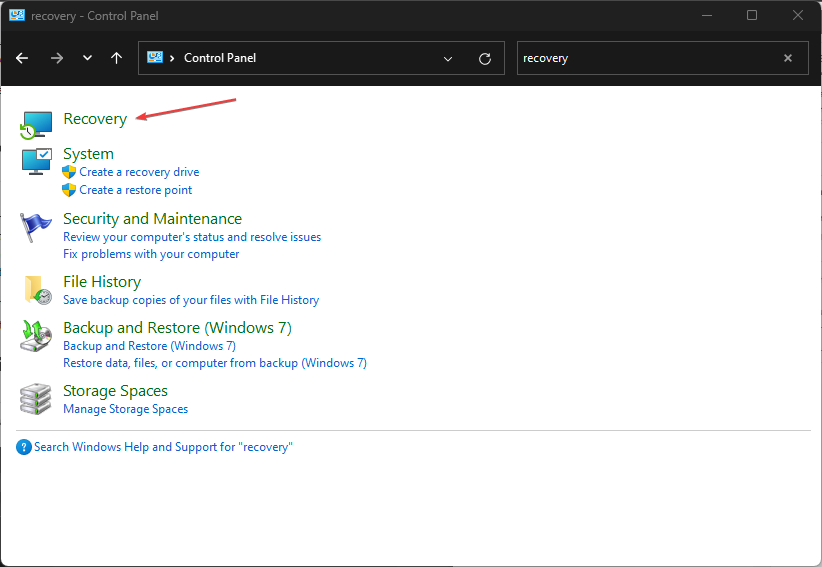
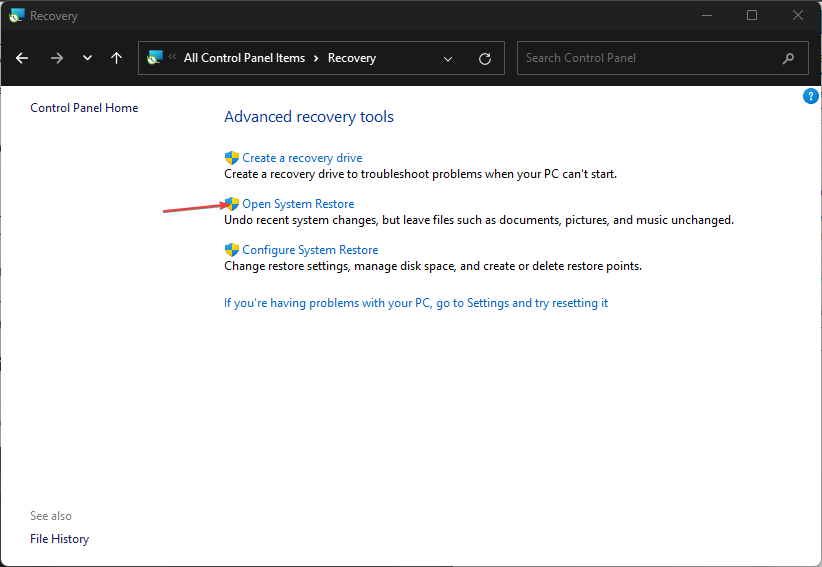
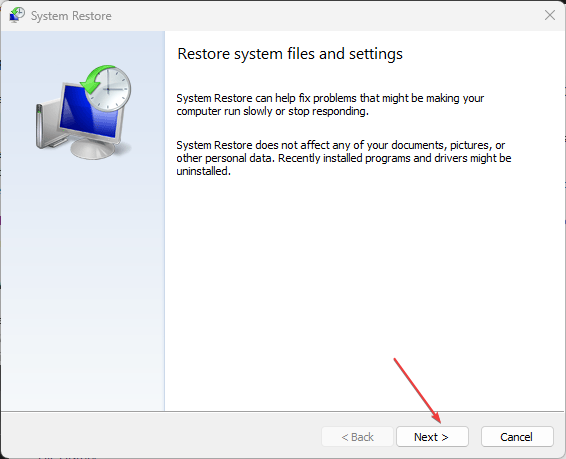
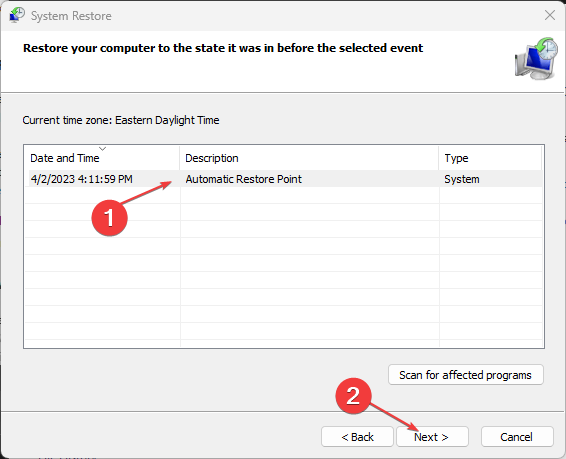
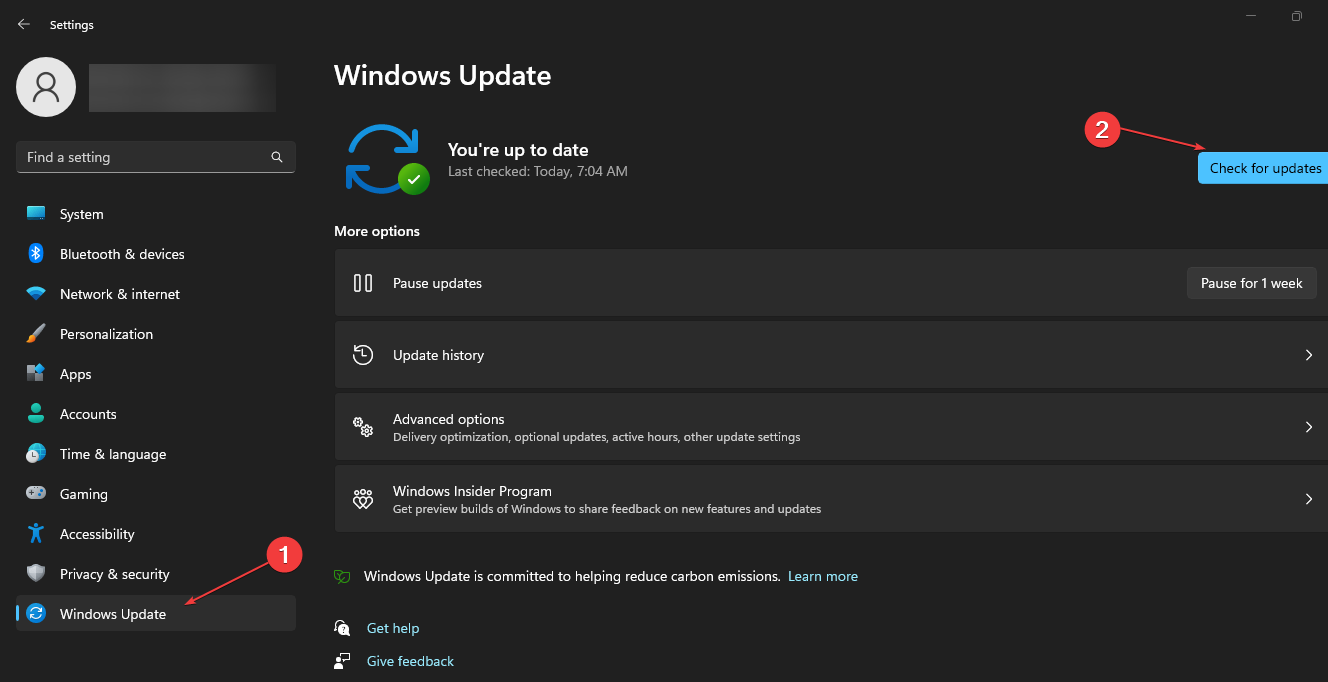








User forum
0 messages